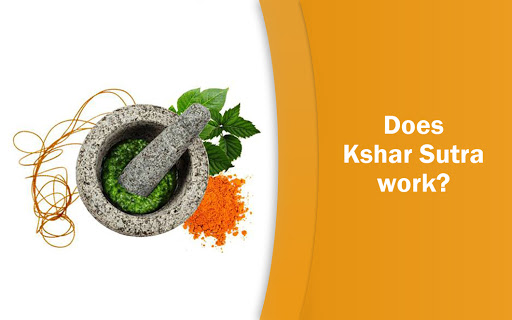
/div>
There are some diseases which are a real challenge, not only for the patient to endure but for the doctor to treat. Amongst them is anal fistula, where a channel is formed between the end of the bowel ( rectum or anal canal ) and the surrounding skin. The fortunate ones are affected with a simple fistula, however, the condition is often complicated with multiple interlinked channels and distant openings. These include recto-inguinal, recto-vaginal, ano-scrotal fistulas which are extremely troublesome.
A number of treatment options are available and thus there is always an ongoing debate about which one outmatches the other. Here we will have a look at
Kshar Sutra
, an age-old Ayurveda technique that has its origin in India. Kshar Sutra has mentions in the archaic Indian literature. It was supposed to be Sushruta’s ( ancient Indian surgeon known to have laid the foundations of surgery ) method of treating Bhagandara ( Sanskrit word for fistula ). The technique has been used since then, albeit modified with developing times. It makes the use of Seton – cotton thread impregnated with layers of medicinal plant extracts ( latex ). It takes about 4 weeks to prepare the Kshar Sutra. Other than fistula, it is also used for the treatment of other anorectal conditions like hemorrhoids, sentinel piles, polyps, warts and pilonidal sinus.
How does this ancient technique work in fistula-in-ano?
The Kshar Sutra is placed in the fistulous tract after giving appropriate anesthesia and both its ends are tied together. It is replaced at weekly intervals. The Kshar sutra remains in direct contact of the tract and, therefore, it physically and chemically curettes out the tract and sloughs out its lining, thereby allowing it to collapse and heal. It is a less invasive, cost efficient treatment. The complications are minimal; chances of loss of sphincter control and resulting anal incontinence are very low.
On the downside, Kshar Sutra is a multi-staged procedure and patients need to come to the hospital every week. The wound discharge is typically more as compared to other techniques. The healing time is also comparatively longer. Pain is a relative component, and whether Kshar Sutra is less or more painful than other procedures remains a matter of subjective variation. Although this technique provides satisfactory results in simple fistula, its efficacy in complicated ones remains debatable.
Bottom line :
Kshar Sutra has withstood the test of time and thus, its credibility cannot be denied. The best approach would be to get it done from a skilled Proctologist who can combine it with other modalities for an effective treatment.



